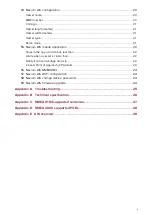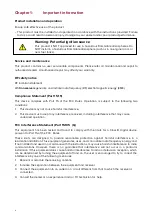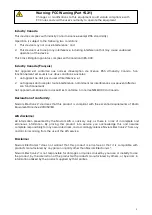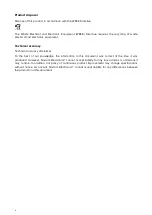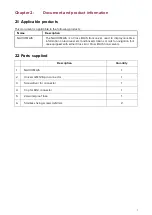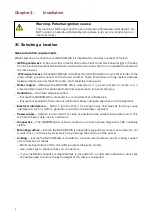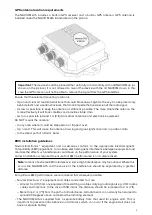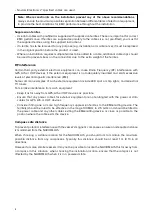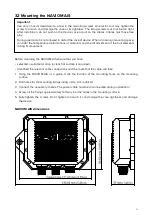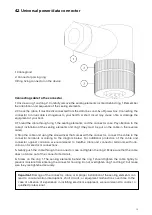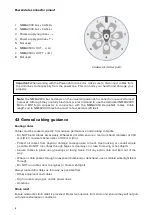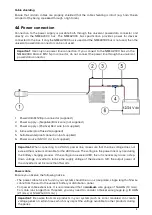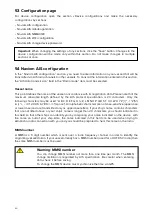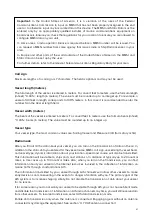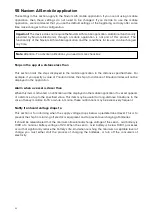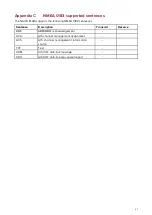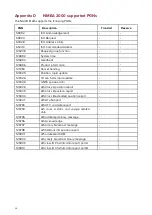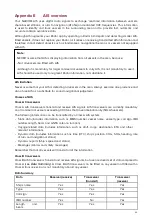
17
To connect NAVIOM AIS to the device via NMEA0183, connect as follows: the “OUT -” NAVIOM AIS
terminal must be connected to the “IN -” or “A” terminal of the device to which you are connecting,
respectively, the “OUT +” terminal of NAVIOM AIS must be connected to the “IN +” or “B” terminal of
the device.
4.7
VHF antenna connection
Connect a VHF antenna (not supplied) to your NAVIOM AIS using the VHF antenna connection.
Use a marine-only VHF antenna and 50 Ohm cable, otherwise the NAVIOM AIS may fail.
Try to place the VHF antenna as high as possible; this affects the distance at which the signal from
other ships will be received, and the distance at which you will be seen. Use a high-quality RF cable
with a low attenuation the cable to the antenna should be as short as possible to reduce signal
attenuation.
Place the NAVIOM AIS VHF antenna from the VHF Radio antenna at different heights and distances
of at least 3m (10 feet) or use the VHF splitter to connect NAVIOM AIS and VHF Radio to the same
antenna. Equipment may fail if two antennas are placed close to each other.
Avoid placing the NAVIOM AIS VHF antenna near the path of a Radar beam.
VHF antenna requirements
The VHF antenna should meet the following requirements:
Frequency band
156.025 MHz to 162.025 MHz
VSWR (Voltage Standing Wave Ratio)
should not exceed 2:1
Impedance
50 Ohm
Connector
PL-259
Summary of Contents for AIS
Page 1: ......

